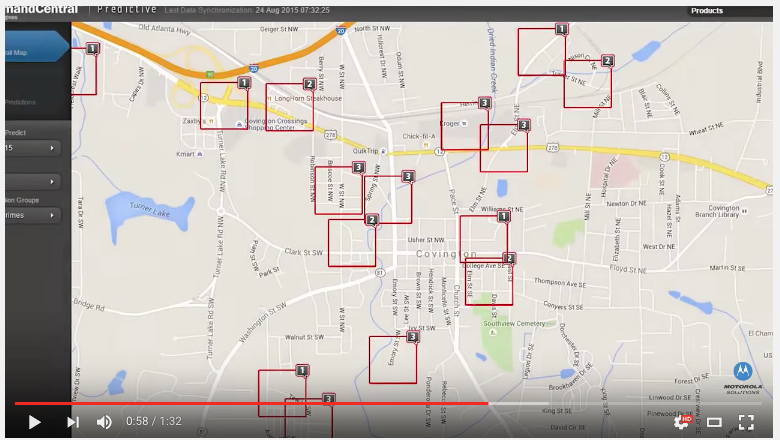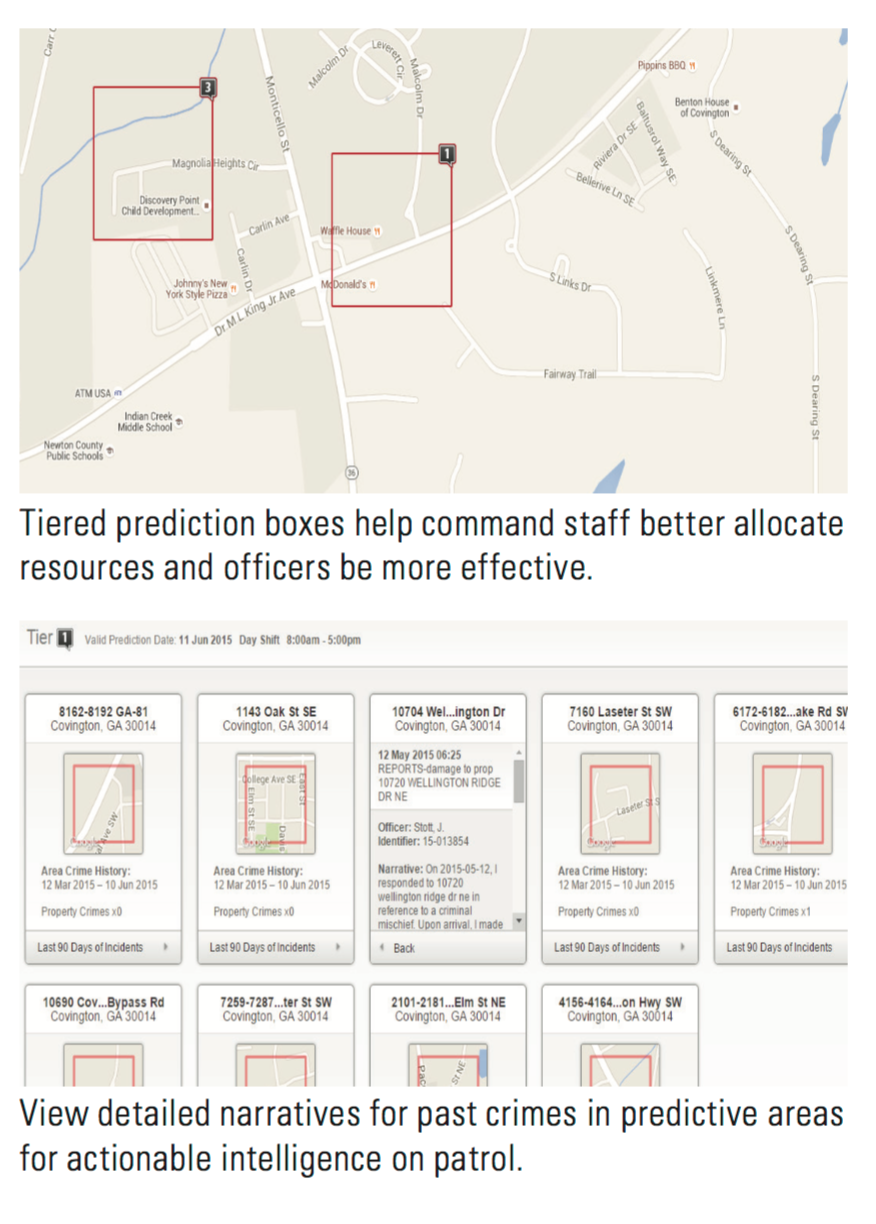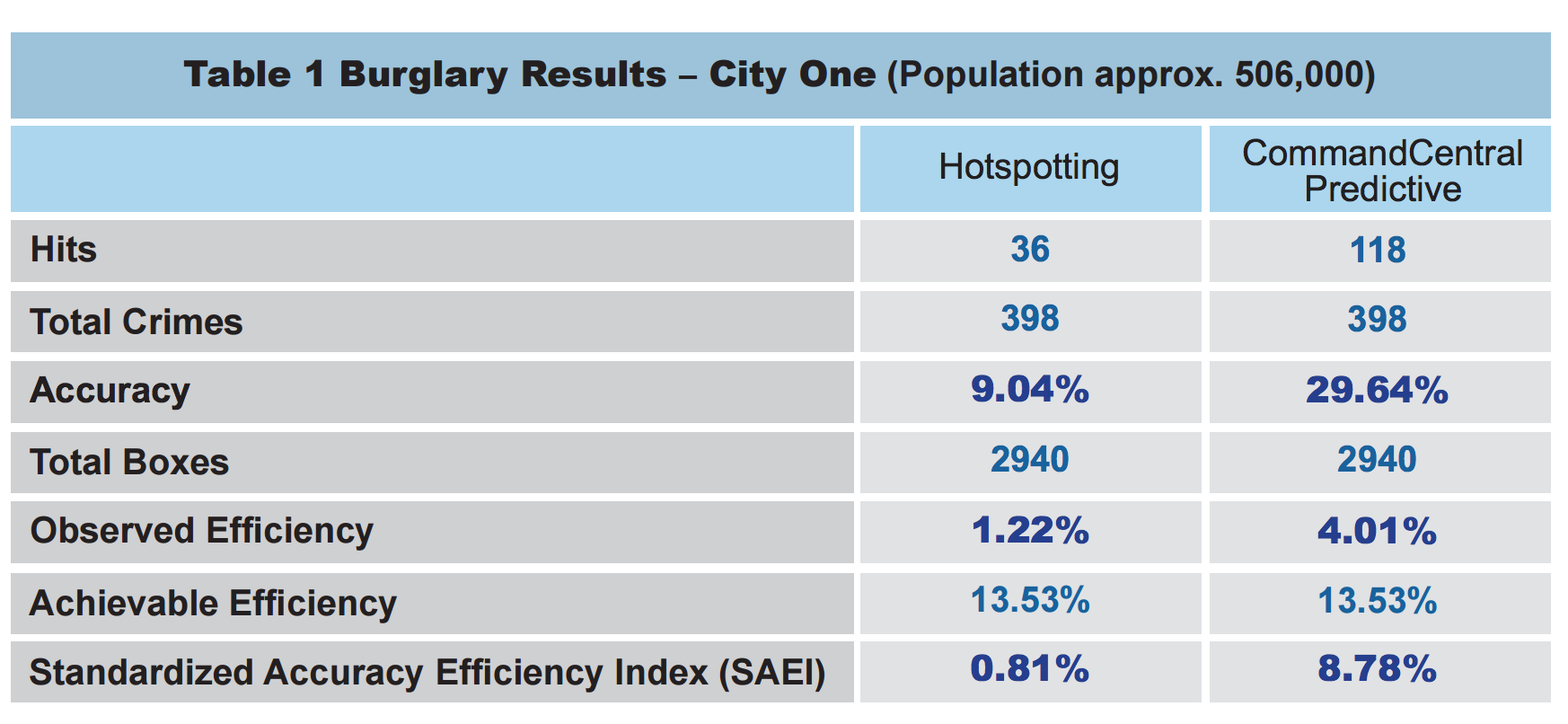What is the system tryping to predict?
CommandCentral Predictive was originally a PublicEngines product. Motorola acquired PublicEngines and partnered with New Zealand-based Wynard Group to make its current product. CommandCentral Predictive is part of Motorola’s Intelligence-Led Public Safety Solutions. It attempts to predictive specific crimes at specific locations.
What data are the system’s predictions based on?
CommandCentral Predictive uses an agency’s historical crime data by tapping into an agency’s records management system (RMS).
The predicitons are specifically based on:
- location
- time of crime
- historical crime patterns
- interaction of crimes
What approach does the system use to make its predictions? How is the data analyzed?
It’s unclear what specific technique CommandCentral Predictive uses, but promotional videos note the use of an “advanced algorithm.” The system may use some machine learning processes, but that is not completely clear.
What do users of the system see or do?
Users see a map with boxes, much like the PredPol forecast. Users see a forecast of time, location, and crime type on a map grid. Each box is assigned a tier (1, 2, or 3), based on priority. The boxes can be as small as 500’ x 500’.
Users will see something like this:


<img src="images/CommandCentral3.png>"
How accurate are the predictions? How is accuracy defined and measured?
We’re not aware of any independent analyses of CommandCentral Predictive’s efficacy.
Despite this, CommandCentral Predictive makes several claims about its accuracy and efficacy. Most notably, it claims to “predict 30% of next-day crime.”
Before Motorola acquired PublicEngines, PublicEngines did release a white paper comparing the accuracy and efficiency of CommandCentral Predictive to traditional hot spot mapping. That study measured accuracy as “Total Crimes Predicted/Total Crimes” and efficiency as “Total Crimes Predicted/Area of the Predictions.”
Their accuracy metrics were defined as follows:
- True Positives: Number of Successful Predictions of Crime
- False Positives: Number of False Alarms or Incorrect Predictions
- False Negatives: Number of Crimes not predicted
Here is their overall accuracy metric expressed as an equation:

Here are the results from one studied city:

These results have led Motorola to claim that “the Predictive Analytics from CommandCentral Predictive is 2.7 to 3.25 times more accurate than traditional Hot Spots. In addition, Predictive Analytics is 3.2 to 4 times more efficient than Hot Spots, resulting in less area that officers are required to cover in order to achieve better results in preventing crime.” But, again, this table only seems to be measuring the accuracy of predictions for burglary specifically — not all crime.
Which departments are using the system?
It’s unclear. We've yet to find any promotional materials specifically reference a police department that is using the system.
How do departments use the system?
Tk.
How do departments use the system?
Tk.